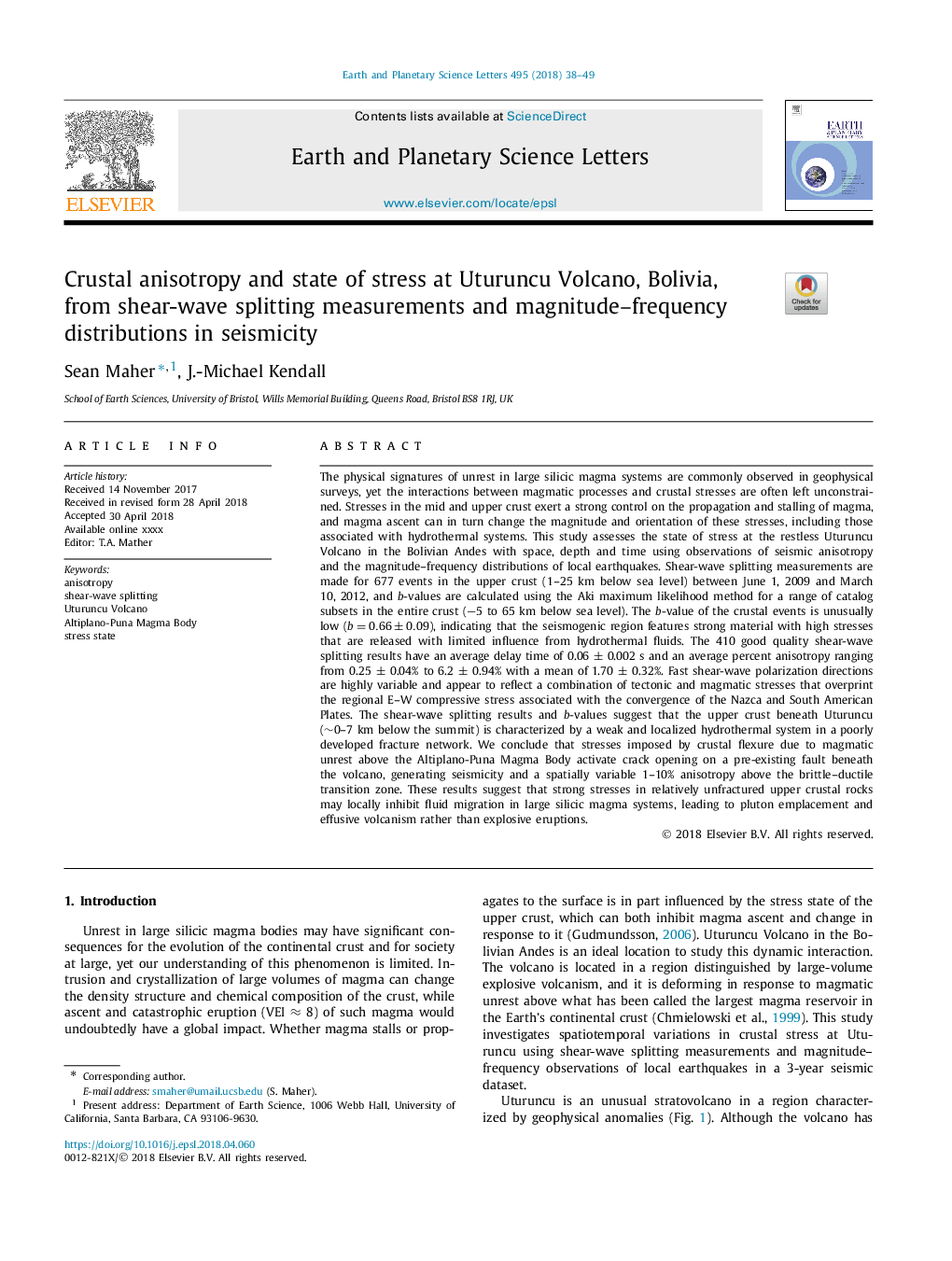| کد مقاله | کد نشریه | سال انتشار | مقاله انگلیسی | نسخه تمام متن |
|---|---|---|---|---|
| 8906796 | 1634661 | 2018 | 12 صفحه PDF | دانلود رایگان |
عنوان انگلیسی مقاله ISI
Crustal anisotropy and state of stress at Uturuncu Volcano, Bolivia, from shear-wave splitting measurements and magnitude-frequency distributions in seismicity
دانلود مقاله + سفارش ترجمه
دانلود مقاله ISI انگلیسی
رایگان برای ایرانیان
موضوعات مرتبط
مهندسی و علوم پایه
علوم زمین و سیارات
علوم زمین و سیاره ای (عمومی)
پیش نمایش صفحه اول مقاله

چکیده انگلیسی
The physical signatures of unrest in large silicic magma systems are commonly observed in geophysical surveys, yet the interactions between magmatic processes and crustal stresses are often left unconstrained. Stresses in the mid and upper crust exert a strong control on the propagation and stalling of magma, and magma ascent can in turn change the magnitude and orientation of these stresses, including those associated with hydrothermal systems. This study assesses the state of stress at the restless Uturuncu Volcano in the Bolivian Andes with space, depth and time using observations of seismic anisotropy and the magnitude-frequency distributions of local earthquakes. Shear-wave splitting measurements are made for 677 events in the upper crust (1-25 km below sea level) between June 1, 2009 and March 10, 2012, and b-values are calculated using the Aki maximum likelihood method for a range of catalog subsets in the entire crust (â5 to 65 km below sea level). The b-value of the crustal events is unusually low (b=0.66±0.09), indicating that the seismogenic region features strong material with high stresses that are released with limited influence from hydrothermal fluids. The 410 good quality shear-wave splitting results have an average delay time of 0.06 ± 0.002 s and an average percent anisotropy ranging from 0.25 ± 0.04% to 6.2 ± 0.94% with a mean of 1.70 ± 0.32%. Fast shear-wave polarization directions are highly variable and appear to reflect a combination of tectonic and magmatic stresses that overprint the regional E-W compressive stress associated with the convergence of the Nazca and South American Plates. The shear-wave splitting results and b-values suggest that the upper crust beneath Uturuncu (â¼0-7 km below the summit) is characterized by a weak and localized hydrothermal system in a poorly developed fracture network. We conclude that stresses imposed by crustal flexure due to magmatic unrest above the Altiplano-Puna Magma Body activate crack opening on a pre-existing fault beneath the volcano, generating seismicity and a spatially variable 1-10% anisotropy above the brittle-ductile transition zone. These results suggest that strong stresses in relatively unfractured upper crustal rocks may locally inhibit fluid migration in large silicic magma systems, leading to pluton emplacement and effusive volcanism rather than explosive eruptions.
ناشر
Database: Elsevier - ScienceDirect (ساینس دایرکت)
Journal: Earth and Planetary Science Letters - Volume 495, 1 August 2018, Pages 38-49
Journal: Earth and Planetary Science Letters - Volume 495, 1 August 2018, Pages 38-49
نویسندگان
Sean Maher, J.-Michael Kendall,